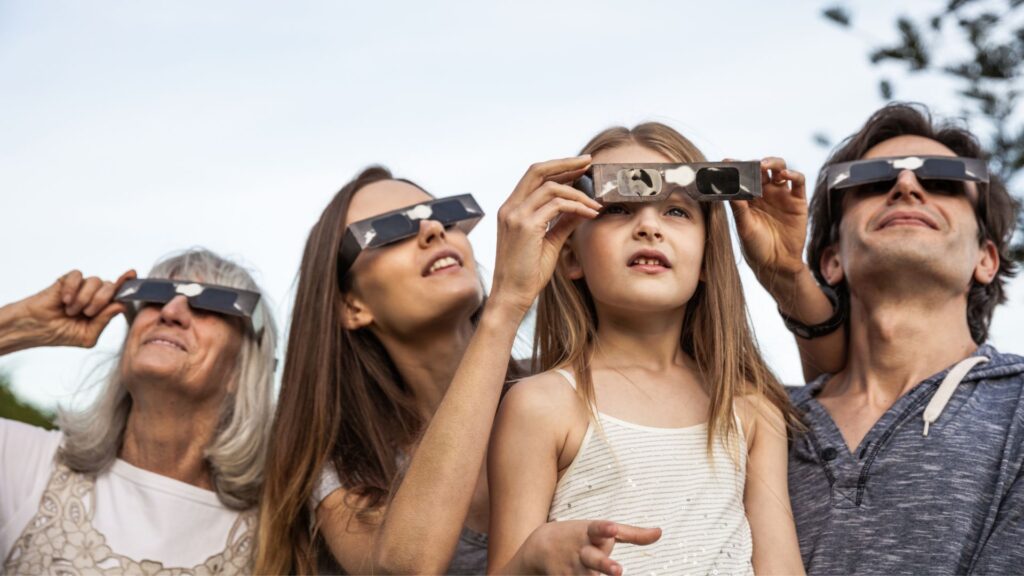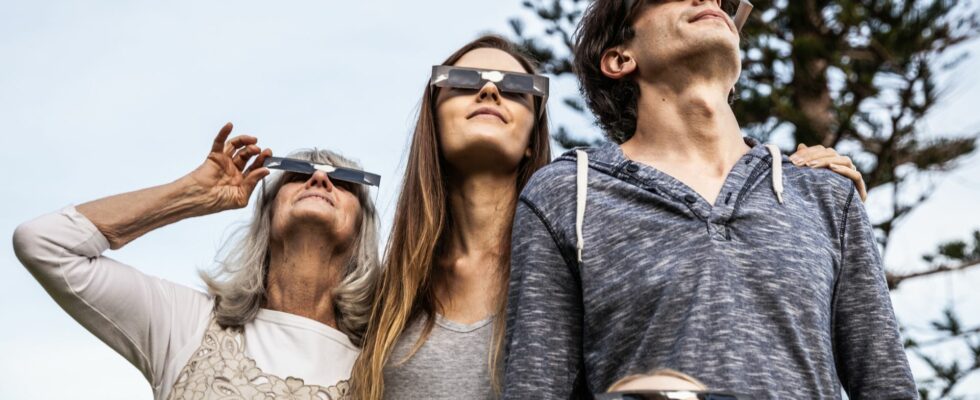A total solar eclipse takes place this Monday, April 8, 2024, and will be visible from part of the United States. If you are there, be careful when taking photos: the sun’s rays can damage your eyes, but also your devices.
It was the big debate of the weekend in the United States: is it a good idea to take a photo of the total solar eclipse this Monday, April 8, 2024 with a smartphone? In order to have an answer to this question, Marques Brownlee, an American YouTuber specializing in tech, decided to do a test himself.
On “ It got a little warmer, but there was no damage » assures Marques Brownlee. “ I’m going to take the plunge and tell you that you can take pictures of the eclipse with your phones. »
However, his diagnosis is not shared by everyone: NASA has warned against the use of smartphones during the eclipse, and believes that the phenomenon could damage them.
Be careful of your camera and phone during an eclipse
The American space agency posted a message on X, in response to Marques Brownlee, in order to warn Internet users. “ We asked the NASA photo team, and the answer is yes, the phone’s sensor can be damaged like any other image sensor if it is pointed directly at the sun. »
Watching an eclipse with the naked eye is very dangerous: the Sun’s infrared rays can cause corneal damage, and above all, retinal damage. Therefore, always wear protective glasses.. For a camera, it’s the same thing: the rays damage the eyes as much as the lenses.
As Doug Duncan, an astronomer at the University of Colorado, explained in Chron, “ the lens of your camera, phone, or the lens of your eye focuses sunlight ”, which damages them. “ If you point your camera at the Sun and hold it like that for a while, you’ll concentrate so much heat that your phone’s camera will be damaged and you won’t get a good photo anyway “.
NASA also notes that the risks are even higher if you use a magnifying lens on your phone. “ You need to use the appropriate filters, just like on any other camera. Best practice is to hold a pair of eclipse glasses in front of your phone lenses when photographing the Sun at any time other than totality. »

Protective filters for cameras are also on sale on specialized sites. Nikon thus specifies that “ Solar filters safe for cameras and telescopes are sold as “full aperture” and “off-axis” filters. These two filters fit over the lens (at the front end of the scope) or over the camera lens “.
For phones, however, this kind of filter does not exist. It is therefore necessary to be careful. Although phone lenses are smaller, and therefore let in less light than camera lenses, the sun can still do damage. However, as Phonandroid already noted in 2018, “ Newer smartphones have larger, faster lenses, and therefore potentially vulnerable to sunlight. Concretely, smartphones equipped with a lens with an f/1.7 to f/2.0 aperture are more sensitive to the sun “.
Today, many smartphone models have apertures of f/1.7 or more: this is notably the case of the Pixel 6a, the new Pixel 8, the Samsung Galaxy S23, or even the new iPhone 15 Pro Max. You should therefore be careful before taking a photo of the eclipse with your brand new phone, so as not to damage it.
For all the other people who are not able to see the eclipse in real life, rest assured: you will still be able to follow it live on the Internet – and if you are one of the lucky ones who will be able to see the total solar eclipse, pay attention to your phone and your eyes.
Subscribe to Numerama on Google News so you don’t miss any news!
